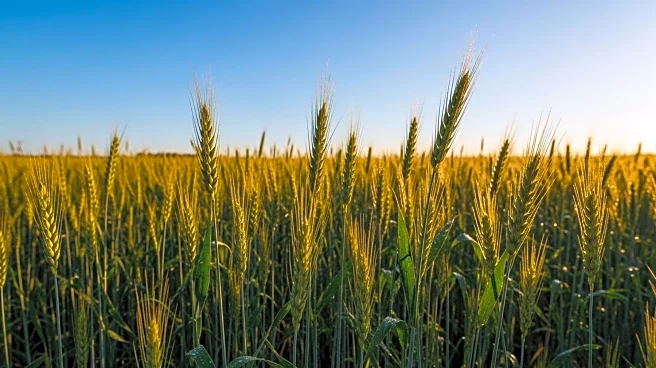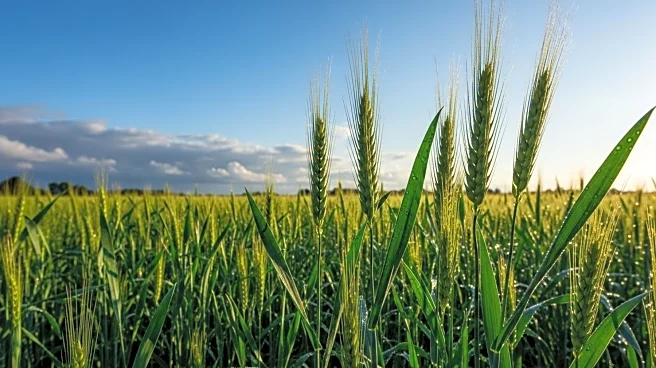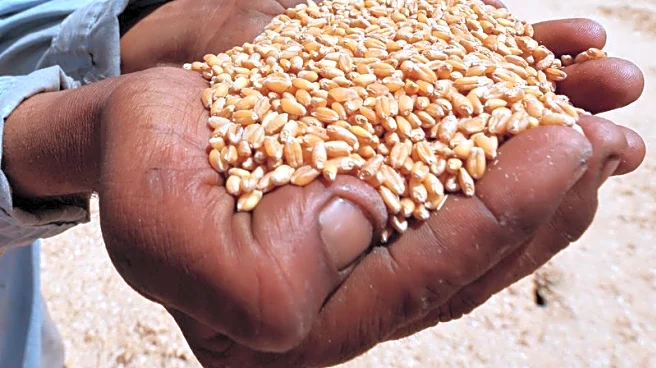What is the story about?
What's Happening?
Recent rainfall in Argentina's wheat-growing regions has significantly improved crop conditions, according to the Buenos Aires Grains Exchange. The rains have enhanced the overall outlook for the 2025/26 wheat season, which covers 6.7 million hectares. Despite the positive impact, approximately 27% of the planted area is experiencing waterlogging, leading to early reports of fungal disease outbreaks. Argentina is a major global wheat exporter, with Brazil and Indonesia as primary destinations for its shipments. However, the excessive rains have slowed down the corn crop, as farmers face challenges in harvesting the previous crop and planting the new one.
Why It's Important?
Argentina's wheat production is crucial for global markets, particularly for countries like Brazil and Indonesia that rely on its exports. The improved conditions could lead to increased yields, benefiting the agricultural sector and potentially stabilizing wheat prices. However, the waterlogging and fungal diseases pose risks that could affect the quality and quantity of the harvest. The slowed corn crop could impact farmers' income and the country's agricultural output, highlighting the delicate balance between beneficial and excessive rainfall.
What's Next?
Farmers and agricultural stakeholders will need to monitor the situation closely, addressing the waterlogging and disease outbreaks to ensure a successful harvest. The Buenos Aires Grains Exchange will likely continue to provide updates on crop conditions, guiding farmers in their planting and harvesting strategies. The international market will watch Argentina's wheat output closely, as it influences global supply and pricing.
AI Generated Content
Do you find this article useful?















